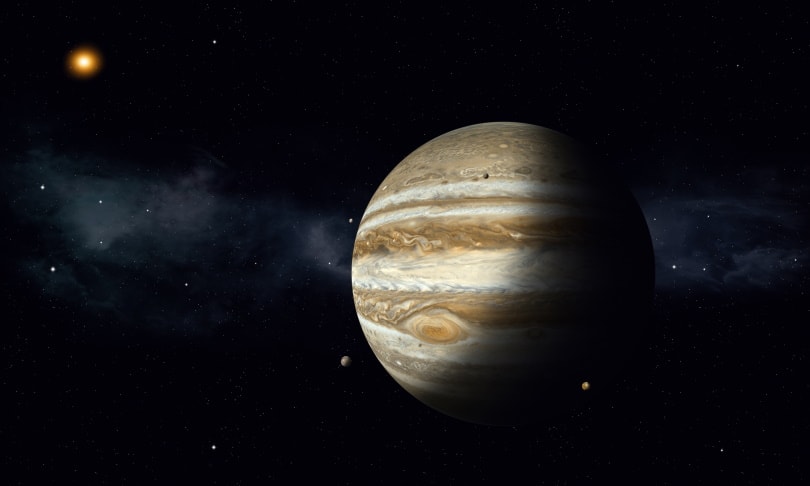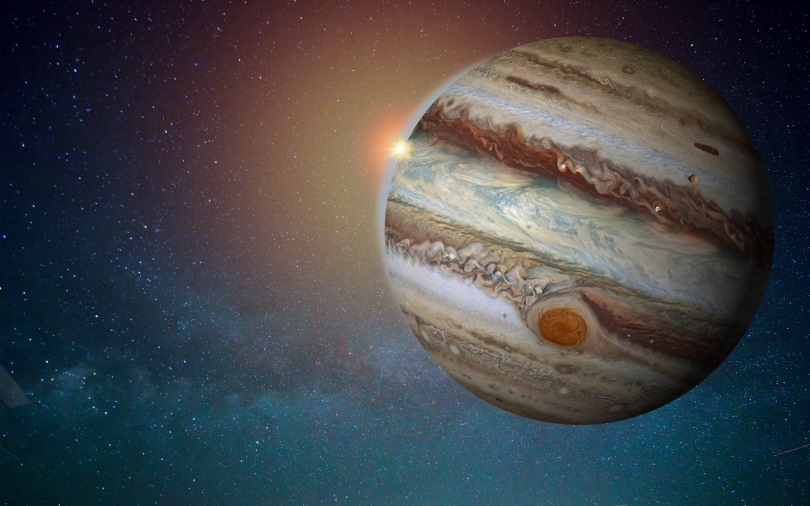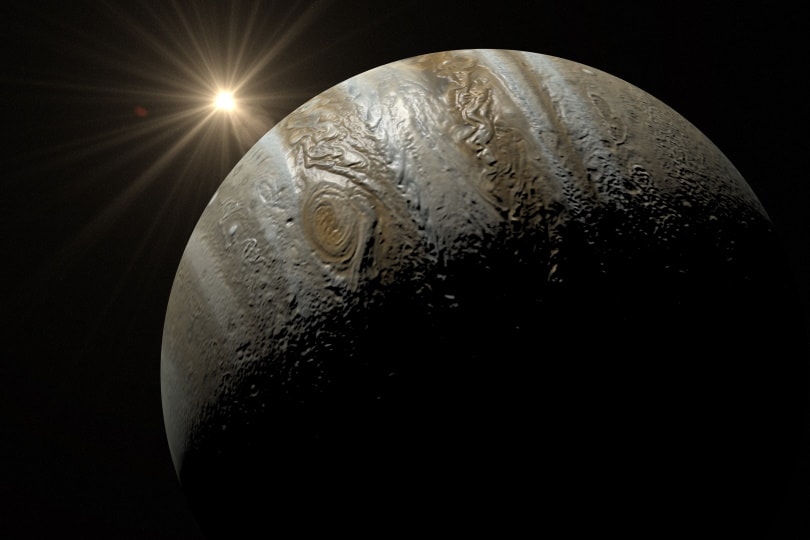How Big Is Jupiter?
Last Updated on

Jupiter is the fifth planet from the Sun and by far the largest planet in our solar system. But exactly how big is Jupiter compared to Earth? We answer that question and so much more here.
Determining how big a planet is is about more than determining its diameter. But don’t worry, we go over that too.

Different Measurements

The exact size of an object can be determined using several different measurements. Diameter and volume are two separate things, and while mass and density are technically two separate measurements, people outside the scientific community often interchange the two.
So, which ones should we break down here? All of them, of course!
Diameter and Volume of Jupiter

One of the most popular ways to break down Jupiter’s size is by the diameter. That makes sense because it’s what you physically see when you look at pictures of Jupiter. However, it’s not exactly the same all the way around.
That’s because the fast rotation of Jupiter actually makes the equator swell compared to the rest of the planet. It’s a fast rotation too! Despite being 1/10th the size of the Sun, or 11.2 times the size of the Earth, it completes one full rotation every 9.8 hours!
All this results in a planet with a diameter of 88,082 miles around the equator, but only 83,082 miles from pole to pole!
But while the diameter changes depending on where you measure it, one thing that doesn’t change is the volume. The volume of Jupiter is an astounding 1,431,281,810,739,360 cubic kilometers! So, while the diameter is only 11.2 times larger than Earth, the volume is a whopping 1,321 times that of Earth!
Mass and Density of Jupiter

While diameter and volume are two of the best ways to describe Jupiter’s size, people are often more interested in its mass, which directly links to its density.
As we know, Jupiter is a gas giant, which means that despite its massive size, it’s not that dense. In fact, it’s only about 1/5 as dense as Earth! That leads directly to the mass: Jupiter weighs 1.9 x 1027 kilograms!
While that measurement might not make much sense, it’s the same thing as 1,900,000,000,000,000,000,000,000,000 kilograms — a massive total. Still, that measurement is only about 2.4 times that of Earth, and that’s why a 100-pound person on Earth would only weigh about 240 pounds on Jupiter.

Summary
With so many different measurements out there, it can be hard to wrap your head around all of them. But that’s a bit true of Jupiter itself. It’s so massive, no human has ever seen anything so large close up, meaning that we don’t have any perspective to go off of.
So, keep running the numbers and stay amazed by planets and their sizes because they’re not going to become any less impressive or any easier to fathom any time soon.
You might also be interested in: How to Take Photos Through a Telescope (2021 Guide)
Featured Image Credit: alexaldo, Shutterstock
About the Author Robert Sparks
Robert’s obsession with all things optical started early in life, when his optician father would bring home prototypes for Robert to play with. Nowadays, Robert is dedicated to helping others find the right optics for their needs. His hobbies include astronomy, astrophysics, and model building. Originally from Newark, NJ, he resides in Santa Fe, New Mexico, where the nighttime skies are filled with glittering stars.
Related Articles:
How to Clean a Refractor Telescope: Step-by-Step Guide
How to Clean a Telescope Eyepiece: Step-by-Step Guide
How to Clean a Rifle Scope: 8 Expert Tips
Monocular vs Telescope: Differences Explained (With Pictures)
What Is a Monocular Used For? 8 Common Functions
How to Clean a Telescope Mirror: 8 Expert Tips
Brightfield vs Phase Contrast Microscopy: The Differences Explained
SkyCamHD Drone Review: Pros, Cons, FAQ, & Verdict
